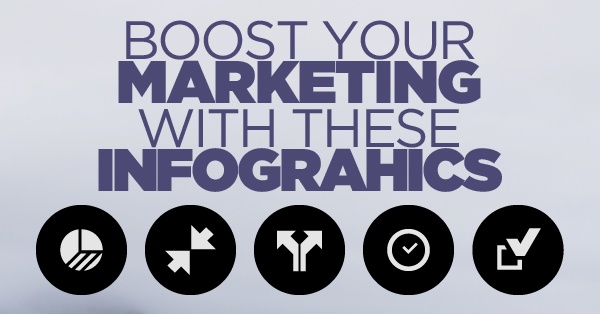
Incorporating infographics into your regular marketing campaigns can help increase a return of investment and revenue. They are a visual representation of data, which helps people digest the information more readily: 90% of information transmitted to the brain is visual and the brain processes that information 60,000 times faster than text (I learned that from an infographic). There are tons of ways to use infographics and for any industry, from small businesses to non-profits to service-oriented companies—here are some common examples of infographics that you can adjust for your specific business.
Data and Research
Arguably the most common usage for infographics is to represent highly complicated statistics, or just math in general: results from surveys, important data metrics, business reports, etc. When about 65% of the population are visual learners, an accompanying visual chart or graphic will help reinforce important and necessary to remember numbers.
Comparison
A comparison infographic can show the pros and cons of one item or idea, or it can compare two items to each other. A comparison infographic of your product versus a competitor’s can be very handy when your audience is at the decision stage, or go broader for people who aren’t ready to buy yet with a comparison of why a solution like yours is the best.
Flowcharts
If you’re ever on Pinterest, you know the joy of a good flowchart. They help you figure out which type of procrastinator you are, which Shakespeare play you should go to, or, more usefully, if your website needs an update. Typically these maze-like infographics are used to help the audience come to a conclusion about themselves or their business.
Timeline
Similar to a flowchart, a timeline infographic takes a reader down a specific path but this time it’s distinctly more chronological. Chart out a timeline of your business or the elation experienced after using your product. Tell a story through the visual journey and your audience won’t be disappointed.
Tips and How-Tos
Infographics are supposed to be informational (hence the name), so put together a list of how-tos for a process that can be complicated or not intuitive. You can also showcase how your product or service fits into a longer solution-finding process for the consumer. Another list that is easily to visualize are tips for consumers. Create fun icons to help readers remember what your suggestions are.
Infographics are supposed to be fun and engaging, making hard-to-consume information easier to digest and remember. Provide value to your audience with the infographics you create, no matter what type you choose best fits your industry and your company.
